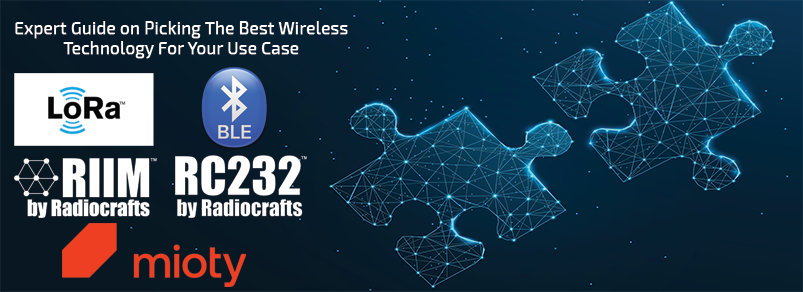Engineers tend to look at a wireless technology in a more feature-oriented sense. What interesting features does one technology have compared to others? As cool as features are, there are more important aspects to consider when picking a suitable technology.
Therefore, in this blog post we will talk about what truly matters when picking a suitable technology for your application. We will go through a comprehensive checklist of information equipping you with the essential insights needed for evaluating your application’s requirements. Additionally, we will present a few scenarios with the goal of discussing the different technology options that could be optimal for your system’s performance. Then, we will address the challenges to consider with wireless technologies and offer insights into various technologies including BLE, LoRa, Sub-GHz Mesh, ZigBee, Sigfox, Wireless M-Bus and more. To round off the blog post we will provide an overview of the technologies available through Radiocrafts.
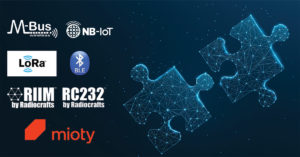
What Really Matters When Talking About Wireless Technology? Cost of Ownership
If impressive features are not the most important aspect when considering wireless technologies for your application, then what is? What truly matters for the business when choosing a suitable wireless solution encompasses various factors. For example, Are you achieving a rapid time-to-market for your product? Does your solution have a sensible cost? In this context, the concept of cost extends beyond the conventional focus on Bill of Materials or device expenses, which tends to be the focus, but rather the total cost of the solution including, infrastructure, maintenance, integration, and installation costs.
When considering infrastructure costs, you face a choice between establishing your proprietary gateway or opting for a cellular solution that leverages existing infrastructure. Naturally, the infrastructure expenses are more favorable when opting for a cellular solution, but it entails subscribing to the infrastructure provider’s services.

Maintenance costs are important as well. If you must visit each of your wireless devices out in the field once per year to change the battery, that will create huge costs. Additionally, if your system is intended to operate for 5 – 10 years there is a high probability that it will require an application bug fix or additional features during that period. Having an on-sight team to manually maintain these devices is extremely expensive. Consequently, it becomes imperative that your network operates seamlessly for the full project lifespan without frequent maintenance requirements, such as on-site firmware upgrades or battery replacements.
Additionally, factoring in the expenses of integrating your system with a backend solution is essential if you envision expanding your network in the future.
Another cost worth accounting for is the power requirements associated with installing gateways. There is a famous project example in France where the company in question compared wireless technologies for their gas meters. They found that by using the Wize technology they could cover a city with a population of 5000 people with only 7 gateways while the comparing technologies needed up to 200 gateways and routers to be viable options. The sheer cost of powering and setting up 200 gateways in a city was a deal breaker for the other technologies.
What Really Matters When Talking About Wireless Technology? A Reliable System
In addition to the system cost, considerations must be made towards your solution’s Quality-of-Service.
Does the system deliver insight or data reliably and on-time? Reliability is critical because you need the system to perform optimally to achieve the expected results. For instance, receiving a water leakage alert a week after the issue has begun serves no purpose; it’s already too late. In addition, if you install a water leakage detector in your home, it is unacceptable for the detector to only give you an 80% probability rate that you will even be notified of a leak. That is simply not good enough and would be classified as a failed product. Therefore, it is important to look at what the data is used for in specific applications.
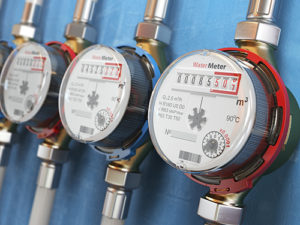
Some applications such as in Smart Metering, can accommodate longer data transmission delays since the data is utilized for billing, which typically operates on a slower timescale. It is unnecessary to have the usage data sent to you within one second because your invoicing system is programmed in days. In these situations, it is acceptable to have long latencies. Also, if your meter loses a data packet, the system can simply process the data the following day during the invoicing cycle, so there is no need for panic. Therefore, to reiterate the previous point, you must consider the application data and reliability requirements for your application.
For example, some applications require low latency and high reliability while for others those requirements are not as critical.
Checklist of Considerations When Evaluating Your Application:
- Is your system battery-operated or mains-operated?
Keep in mind that the longer the range of your solution, the more battery drain your device will suffer.
- How many devices do you want in the network?
- How big of an area are you covering with a certain number of devices?
The number of devices in a network and the distance between the devices are important factors to consider when choosing a wireless technology. For example, if you are covering a huge area with 4 devices, then a mesh technology might not be the best way to go about it because you cannot really make efficient mesh connections with this kind of setup. In this case, an LPWAN solution might be optimal. However, if you have 100 devices in the same area, then maybe a mesh connection is the optimal technical solution.
- Are you only sending uplink data?
The most common operation is sending data up from sensors to the gateway, but some solutions include control systems where control data is sent down to the sensors (downlink data). Also, with peer-to-peer devices or mesh routers, many devices are sharing data between each other. These are important distinctions that need to be made when choosing a wireless technology.
- Reliability, how much of your data do you need to receive for this system to be valuable?
For instance, envision a scenario in a multi-level parking garage equipped with sensors on each parking spot. Let’s say your system indicates that there are 3 parking spaces available on the 4th floor. If this data proves to be inaccurate due to, say, a lost or undelivered update packet, it could result in a surge of vehicles heading to the fourth floor only to discover that no parking spaces are available Such incidents can lead drivers to perceive your parking sensor system as unreliable and ineffective, thereby diminishing its value both for end-users and operators.
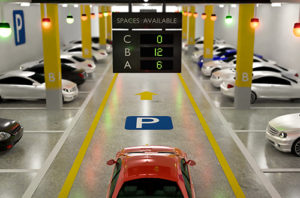
- Security, how secure is your system?
There are different layers of security to consider from more basic encryption to more advanced transport layer security (TLS) which you can have in the highest end systems.
- Connection time. How long does it take your devices to connect to the network?
Some networks can be volatile meaning you have devices that move around constantly. In such contexts, it’s suboptimal for mobile devices to maintain a continuous connection with their parent gateway. The constant need to update the connection as these devices change position can lead to substantial power drain. Instead, you will want the devices to be asleep most of the time. In a static system, connections are not an issue because it is only done once during system start-up.
- Update time, how often is data sent?
The frequency of updates plays a pivotal role in various monitoring processes, such as tracking soil humidity. You do not need to update soil humidity data every 10 seconds because the soil does not dry up that quickly anyways. Getting that information every 5 – 10 minutes should suffice. Meanwhile, other processes such as crane control, need to receive data very often.
- Latency, when your system detects an event, how long does it take for a data packet to be sent and received?
- Operating region, where are you deploying your system?
When aiming to market your product on a global scale, numerous factors warrant careful consideration. For example, 2.4 GHz is supported worldwide so it might be the optimal solution for your use case. If you opt-in for a Sub-1 GHz solution for the longer range, then you need to study the different frequency bands supported in diverse regions around the world. For example, Europe supports 868 MHz, the US supports 915 MHz, and India supports 865 MHz. Consequently, thorough research into your product’s intended geographical deployment and compliance with radio regulations in those regions becomes imperative.

This checklist serves as a comprehensive guide for evaluating your application. Now, let’s delve into a couple of illustrative examples where we apply this checklist to determine the most suitable technology for specific use cases.
Example 1: A few devices operating with long distance:
Let’s say you want to have a network with a few devices located far apart from each other.
In such a scenario, opting for an LPWAN (Low-Power Wide-Area Network) system becomes the likely choice. This system gives you less gateways, which is good for the infrastructure cost and can support 2 – 3 gateways instead of 10. However, it’s worth noting that LPWAN technologies tend to consume more energy when transmitting data packets, resulting in a shorter battery lifespan compared to short-range systems transmitting data at similar intervals.
In addition, by using the same gateway setup mentioned above, you get a lower probability of data loss because the LPWAN technology sends the packet further. To mitigate the rapid battery depletion, you can send less data. Furthermore, extending data transmission intervals from 15 minutes to one hour can help conserve battery life while introducing a slight increase in latency.
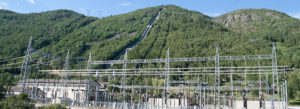
Example 2: Battery-Operated Mesh:
This system offers a cost-effective infrastructure due to the absence of an extensive array of power-hungry gateways, coupled with the absence of subscription costs. However, because they are battery-operated, the batteries need to be changed. Therefore, you must calculate the battery lifetime of your system and consider the cost regarding how often you need to change the batteries. Changing the battery every 3 months would be detrimental to the business case but changing batteries every 3 years would make battery-operated mesh an optimal solution.
It’s important to note that every battery-operated system introduces increased latency when compared to a mains-operated system because battery operation means that devices are sleeping which means they are not always able to listen for incoming packets.
Example of Combining Technologies:
For some use cases a combination of technologies suits better than choosing a single technology. For example, if you have 1,000 sensors in a large school campus, you might say an LPWAN technology using 1 – 3 gateways to cover the entire school is the better solution. However, depending on how often these devices send data, you might have to change their batteries quite often. How much would that cost you?
What if instead, you take advantage of the school-wide WiFi coverage by using 20 WiFi gateways and a lower power star network with a shorter range. While this increases the gateway count from 3 to 20, it significantly extends the battery lifespan from annual replacements to once every 3 years. What would that save you in terms of costs?
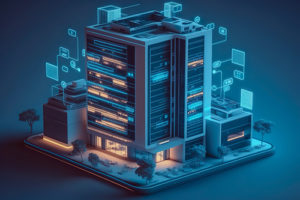
Another option to consider is to have a Sub-GHz mesh network which would require 100 devices covering the whole school plus BLE sensors. You can typically buy low-cost off-the-shelf BLE sensors from budget-friendly significantly reducing device expenses compared to the previous examples. Also, these devices would have a battery lifetime of up to 5 years meaning you can essentially dispose of them and purchase a new batch after 5 years instead of replacing the batteries. All this considered, the infrastructure cost will increase but the device cost will decrease.
Ultimately, a comprehensive assessment is essential, involving calculations to compare the total cost of ownership across the various solutions under consideration.
Challenges To Consider With Wireless Technologies:
One challenge is downlink data, which Radiocrafts also likes to refer to as the forgotten operation. Why is downlink critical? To begin with, it enhances the system’s Quality-of-Service, notably improving reliability by enabling functionalities like acknowledgments and retransmissions. Without the acknowledge and retransmission feature, you will not know how much data is being delivered. In addition, downlink latency is critical for control devices or when updates to local processes are required. For example, instructing your Smart Irrigation system to turn on/off the water in the field.
A second challenge involves firmware over-the-air updates (FOTA) which are essential for many systems. FOTA is normally a challenge in LPWANs because a gateway with 1000 devices cannot acknowledge all devices. At least in Europe, this would be a violation of the duty cycle requirements. Therefore, Sigfox, LoRaWAN, mioty, and Wize are all suboptimal solutions for FOTA. Normally mesh is better suited for control systems. While battery-operated mesh networks may introduce latency, they still enable effective control actions while adhering to duty cycle constraints.
A third challenge is related to futureproofing in an ever-growing IoT market. Over the last decade the interference and background noise from the abundance of different wireless installations has increased significantly. As a result, all new systems will suffer from high packet loss or at least experience lots of noise. Notably, mioty is the only technology that has properly addressed this issue, offering unmatched robust performance in high-noise environments. Alternatively, cellular technology, operating in licensed bands, sidesteps these challenges by avoiding interference from other networks.

A fourth important consideration is connectionless communication. In certain scenarios, establishing and maintaining a continuous connection between devices and their parent gateways may not be desirable. This is especially true in volatile systems where devices or individuals frequently enter and exit the network. In such cases, the overhead of constant background communication, where devices ask, “Can I join your network?” and subsequently maintain a continuous exchange every 10 seconds, becomes impractical. To address this, technologies like BLE and the Radiocrafts RC232 protocol offer connectionless communication. For example, the RC232 protocol works by sending a data packet and if there are enough devices in the network or the right devices receive the data, they will do so. Given the absence of a direct connection, you will typically send each data packet 1 to 4 times to ensure a robust system.
A final challenge revolves around reliability. It is important to recognize that all wireless technologies will experience packet loss to some extent. The question is: How much packet loss can your application handle before it loses its value? Some applications only require 50% delivery rate while others require 90% plus, and some require 99% delivery rate. Therefore, determining and investigating the necessary level of reliability is an essential step for each unique application.
The Different Technologies and Their Benefits:

BLE / ZigBee/ Matter – Efficient technologies supporting 2.4 GHz for personal networks, home networks, and consumer equipment. In addition, with mesh you can extend range, for example, ZigBee is often used to extend range inside of households. However, with large networks covering large areas, you start to get complex mesh issues.

Medium range star networks such as Wireless M-Bus 868 MHz and IEEE 802.15.4g star – These solutions are often best for systems requiring low power efficiency. You can have devices with much lower power, exceeding 10 years battery lifetime, compared to LPWANs, which may offer only one year of battery life. However, you do not get the same range as with LPWANs so it is a trade-off. These solutions still provide superior range compared to 2.4 GHz technologies.

LPWANs such as Wireless M-Bus 169 MHz or Wize – LPWAN technologies offer exceptional range capabilities, making them well-suited for devices located in hard-to-reach places, where radio signals must penetrate through brick walls, wooden walls, glass, metal casings, and other similar obstacles. In this case, the low frequency is an advantage. Lower frequencies excel in penetrating obstacles, while higher frequencies, tend to reflect off them. LPWANs can also be used for large city-wide networks and country-wide networks but then you need to have a solid player that can manage this network.
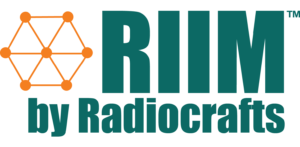
RIIM, Sub 1-GHz Mesh – Sub-1 GHz solutions have witnessed a resurgence in popularity over the past three to four years, offering distinct advantages. They enable the deployment of more battery-operated mesh systems, leading to lower infrastructure costs. With mesh you can also have downlink communication with controlled latency. In addition, due to the multi-hop mesh functionality, a Sub-GHz mesh solution can cover large areas with a couple 100 devices comparable to the range of LPWAN systems. Furthermore, Radiocrafts Sub-GHz mesh solution, RIIM, supports intelligent frequency hopping using the Adaptive Frequency Agility feature which means the duty cycle limitation of 1% in Europe can be exceeded to 37%, providing high data throughput for applications with higher data requirements. On top of that, RIIM also supports exceptional reliability of 99.99% packet delivery rate and over-the-air updates.
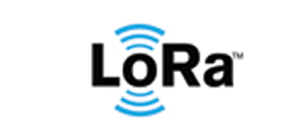
LoRaWAN – LoRaWAN is an ideal solution if you intend to design a system utilizing readily available off-the-shel products because there are so many products available, including gateways. LoRaWAN also supports very long range to medium range depending on the spreading factor. For example, if you choose the lowest data rate, you are down to the same range as the medium range star networks, but the biggest spreading factors gives you superior range. However, LoRaWAN does face challenges in scalability and Quality-of-Service, primarily because this technology lacks acknowledgments, as previously mentioned.

mioty – mioty supports the best-in-class Quality-of-Service, reliability, and scalability of all LPWAN solutions in the market today thanks to its innovative telegram splitting feature in combination with Forward Error Correction. This combination means mioty can have much higher reliability in a scenario where you have other transmitters, a lot of background noise, and several mioty sensors sending at the same time. These issues that most other solutions struggle with does not pose a problem for mioty as the telegram splitting feature addresses these issues effectively, ensuring maximum delivery rate on data packets. mioty also supports the same range as the best LoRaWAN range options.

Sigfox – Sigfox is somebody else’s infrastructure, so if you can use it, your infrastructure cost will be $0, however you will have to pay a subscription. As with LoRaWAN, it has a Quality-of-Service issue because you cannot get acknowledgements.
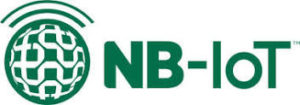
NB-IoT – NB-IoT supports the best coverage worldwide, for example, if you design a tracker for a container operating in a city you cannot use any other technology than cellular. NB-IoT does, however, have a subscription cost and complex product approvals for different operators which is a challenge. Because of the long range you also have high power consumption.
Radiocrafts Offerings:
- RC232 – RC232 supports exceptionally easy-to-use connectionless communication which we offer at different frequencies and at high power or low power.
- ZigBee
- RIIoT – Star network based on IEEE 802.15.4.g which is a medium range and very low power consumption solution. Acknowledgement supported for high reliability.
- Wireless M-Bus at 169 MHz and 868 MHz
- RIIM – Sub-1 GHz mesh solution which is becoming very popular these days because of the battery-operated routers, large coverage, efficient scalability, and reliable downlink communication.
- mioty – A new standard bringing forward an LPWAN solution with exceptional reliability and scalability which could be a game changer in the LPWAN market.
What To Take Away From This?
There are so many wireless technologies available today which cover every application under the sun, but how do you choose the absolute best solution for your specific use case? There are several criteria you need to consider including the total cost of the solution taking into account infrastructure, maintenance, integration, and installation costs. In addition, the solution’s Quality-of-Service needs to be considered. How much data can you lose before the system loses its value? Radiocrafts created a simple checklist which you can follow to measure the above requirements when evaluating a certain solution for your application. We also provided a few examples using the checklist to help you in your evaluation. You also need to consider several challenges that arise when using wireless technologies and which solutions are optimal for solving these challenges. Important challenges to keep in mind include downlink data, firmware over-the-air updates, futureproofing, connectionless communication, reliability, and more. Finally, we provide you with a list of popular solutions that exist in the market today, comparing their strengths and weaknesses for different applications.

